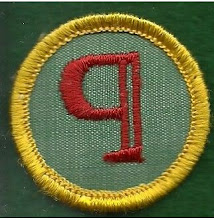Plot or event-driven stories often feel like World War II documentaries: “The Battle of the Bulge: the Allied Armies stand ready to invade Germany and….” Big sweeping events; military commanders gesturing at maps and making decisions that will affect thousands of people, maybe short cutaways to a soldier’s letters home.
Make a movie the battle and the story becomes character-driven: the battle from the POV of an American intelligence officer and a German Panzer commander. (Battle of the Bulge, 1965)
The story of World War II is both things--big overview, the stories of the individuals who fought. While interviewing WWII vets for a project I was struck at how similar the stories were -- although each man and woman felt that their story was unique, it was all the same story. I did 138 interviews and there were only a half-dozen that stood out – from men and a woman who had bucked the tide, protested the war, or resisted being drafted. Their stories provided the necessary counterpoint to the usual war story; ultimately the documentary was filmed from their perspective. (The documentary is no long available*, but the Antiwar and Radical History Project-Pacific Northwest covers the same material.)
Plot/event-driven story: I was a catering manager about a zillion years ago and a scheduling snafu put a wedding and a 50th anniversary party in the same venue at the same time. The other catering manager and I did the only thing we could -- we combined the events.
The venue was on a military base – the clubhouse off the golf course; nine holes of lumpy sand and grass. There were two parties of 300+ people each; they both couldn’t fit in the clubhouse’s “ballroom” at the same time. Rent a tent? Right-o. We ended up with two not-quite surplus mess tents. (And how we got those is a story worthy of a M*A*S*H script.)
The tents went up right outside the ballroom. One tent was a chapel; after the wedding the sides were rolled up and band(s) came in. The other tent was had two buffet lines and tables decked out in tablecloths and flowers. We set up a “cabaret” in the ballroom with round tables and chairs and –most importantly -- the open bar. About 200 people could sit down comfortably inside.
…and now the story becomes character-driven…
It was a surprise party for the anniversary couple; the husband was a veteran of World War I and he thought the mess tents had been brought in especially for him.
The husband-to-be was on active duty and in Vietnam; he has a one week pass; get married, have a short honeymoon as he was back to Danang. He saw the mess tents and laughed, said he felt right at home.
###
A plot-driven story, where the reader hangs on every event, not necessarily on the characters, is very challenging. Mystery writers often write from this perspective; the characters are trying to uncover the plot.
Nonetheless, the reader wants characters, someone to latch on to. The author decides who those characters will be: hero, anti-hero; leader, follower; quirky, boringly "normal" and so forth.
A fabulous plot with undefined characters will make your would-be editor will weep into her coffee. However, strong well-defined characters and a very thin plot can work, for example Seinfeld, the show about “nothing”.
However, never underestimate your reader's innate knowledge of how a story should go. I remember my third-grade students discussing Star Wars in 1977.
Kid #1: "I wanna be Luke!"
Kid #2" "I wanna be Vader. He's got all the power 'cause he's dark side."
Kid #1: "But Luke will win in the end."
Kid #2: "But Vader has all the power because he's dark side and light side. Luke doesn't know the power of the dark side..."
Kid #1: "But Luke has to win in the end because he's... good!"
Next week: conflict.
__________________________________
*Two projects that I worked on that are still in circulation, about the Japanese American draft resistance: Conscience and the Constitution and In Search of No-No Boy

No comments:
Post a Comment